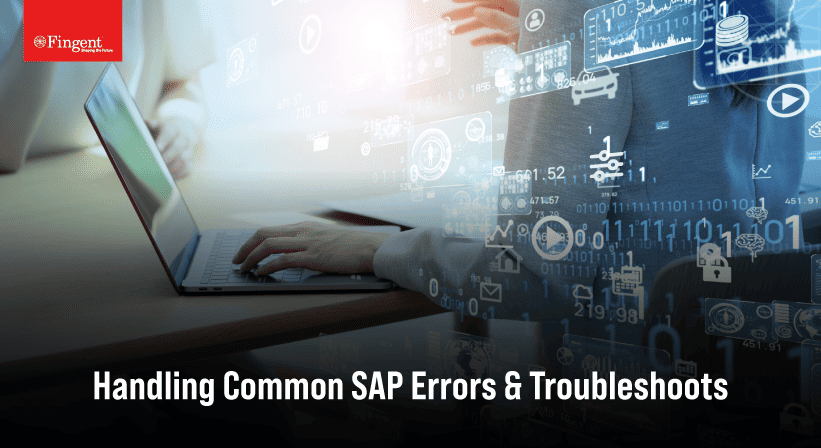SAP S/4HANA is a catalyst for business success, weaving its transformative power across the ERP landscape. SAP S/4HANA is more than just any software; it’s a realm of possibilities. It is like a digital fortress that integrates and orchestrates your supply chain, ensuring harmony and efficiency throughout your organization.
With a single source of truth, it empowers organizations to make informed decisions based on accurate, up-to-the-minute insights. It’s like having a trusted compass that illuminates the hidden paths of your operations, empowering you to confidently navigate the ever-changing terrain of the business landscape.
Understanding SAP S/4HANA – A Visionary Leap Into The Future
SAP S/4HANA is not your ordinary ERP solution. It harnesses the power of in-memory computing, real-time analytics, and a simplified data model to deliver a seamless and intelligent ERP experience. It is a technological marvel that blends speed, agility, and simplicity into a single transformative platform.
The shift from traditional SAP ERP systems to SAP S/4HANA marks a significant milestone in the ERP landscape. It represents a move from a row-based data model to an in-memory, columnar-based data model, resulting in lightning-fast data processing and real-time analytics.
With the transition to SAP S/4HANA, businesses unlock a plethora of benefits. They gain real-time insights for faster decision-making, simplified processes for improved efficiency, and intelligent technologies for enhanced automation and predictive capabilities. It’s like upgrading to a futuristic command center that propels your business into a new realm of success.
Let’s begin by unveiling the key features and capabilities that make SAP S/4HANA shine.
- It brings the power of real-time insights, allowing businesses to make decisions based on up-to-the-minute data.
- SAP S/4HANA simplifies processes, reduces data redundancies, and eliminates complexities to streamline operations.
- It leverages advanced technologies such as artificial intelligence (AI), machine learning, and predictive analytics to unlock automation, insights, and predictive capabilities.
Read more: A Beginner’s Guide To Implementing SAP S/4HANA
Key Benefits of SAP S/4HANA
1. Grasp The Pulse of Your Business at Any Given Moment with Real-Time Analytics.
With its in-memory computing capabilities, SAP S/4HANA processes massive amounts of data in real-time, allowing for faster and more responsive operations. With real-time analytics, you have the power to respond swiftly to changing market dynamics, identify emerging trends, and seize opportunities before they fade away. It’s like having a nimble and swift chariot that propels your business forward, helping you stay ahead of the competition.
2. Enthralling User Experience
SAP S/4HANA’s intuitive interface and personalized dashboards transform ERP navigation into a delightful journey. It’s like stepping into a realm of effortless elegance, where tasks are completed with grace and efficiency, where your teams can work seamlessly, unlocking their full potential and driving productivity to new heights.
3. Declutter Your Landscape with a Simplified Data Model
SAP S/4HANA can help you bid farewell to the tangled webs of complexity and data redundancies. It enables you to declutter your business landscape, allowing you to focus on what truly matters—innovation and growth. With a simplified data model, your organization gains agility, flexibility, and the ability to adapt swiftly to changing business needs.
Now that you are aware of the business benefits let’s discuss how you can prepare for SAP S/4HANA implementation.
Prepare For SAP S/4HANA Implementation
With the right foundations in place, organizations can embark on their SAP S/4HANA implementation with confidence, ready to unlock the full potential of this transformative platform.
1. Assessing Business Readiness:
Assessing the organization’s readiness for SAP S/4HANA implementation is like taking stock of your supplies before embarking on a grand expedition. Evaluating data readiness ensures that your information is accurate, complete, and compatible with the new system. Additionally, allocating resources appropriately – including skilled personnel and budget – ensures that you have the necessary support to navigate the implementation journey smoothly.
2. Building the Implementation Team:
On a voyage, each member has a vital role to play. Project managers steer the entire implementation process. Functional consultants bring their expertise in specific business areas, ensuring that SAP S/4HANA meets your unique requirements. Technical experts handle system configurations, integrations, and customizations. Together, this cross-functional team brings together diverse perspectives, fostering synergy and ensuring that all aspects of the implementation are addressed comprehensively.
3. Chart your Course by Defining Implementation Goals and Scope:
Defining clear goals and scope for the SAP S/4HANA implementation provides a clear direction and prevents aimless wandering. By identifying key business processes, you prioritize areas that will benefit most from the new system. This focused approach optimizes time and resources enabling effective project planning and increasing the likelihood of a successful SAP S/4HANA implementation.
Six Phases of SAP S/4HANA Implementation
Each of the following well-defined phases of the SAP S/4HANA phase brings your organization closer to harnessing its and unlocking new levels of efficiency, agility, and competitive advantage:
Phase #1 Project Planning and Preparation:
Planning and preparation are like laying the foundation for a solid structure. Activities in this phase include creating a detailed project plan, establishing timelines, and defining deliverables. By clearly outlining project objectives, tasks, and responsibilities, organizations ensure a structured and well-organized implementation process.
Effective stakeholder communication is vital during this phase, keeping everyone informed and engaged. Change management strategies are implemented to address any resistance to change, ensuring the smooth adoption of SAP S/4HANA.
Phase #2 System Installation and Configuration:
System installation and configuration start with assessing hardware requirements and designing the system landscape, ensuring optimal performance and scalability. The SAP S/4HANA system is then installed, configured, and integrated with other systems, creating a cohesive IT ecosystem. This phase requires careful consideration of factors like network infrastructure, security, and software installation.
Phase #3 Data Migration and Conversion:
Data migration and conversion are like transferring belongings to a new home. Legacy data is extracted, transformed, and loaded into the SAP S/4HANA system. This process involves data cleansing, eliminating duplicates, and ensuring data accuracy. Data validation is crucial to verify the integrity and consistency of migrated data.
Phase #4 Customization and Configuration:
This phase is like arranging furniture in a new space. Configuration involves setting up master data, defining workflows, and configuring system functionalities. This phase ensures that SAP S/4HANA aligns with the organization’s unique processes, enabling efficient operations and improved user experience.
Phase #5 Testing and Training:
Testing and training form the backbone of a successful SAP S/4HANA implementation. Thorough testing is conducted to validate the system’s functionality, performance, and data accuracy. This includes unit testing, integration testing, and user acceptance testing.
Training programs are designed to equip end-users with the necessary skills and knowledge to effectively utilize SAP S/4HANA.
Phase #6 Go-Live and Post-Implementation Support:
Going-live is like opening the doors to a new facility, enabling users to work with real data. Post-implementation activities include monitoring system performance, addressing user feedback, and providing ongoing support. Continuous improvement initiatives and enhancements are implemented based on user experience and evolving business needs. Regular system maintenance and updates ensure the system’s optimal performance and long-term success.
These are some best practices and lessons learned from previous SAP S/4HANA implementations. They offer valuable insights that can guide your organization toward successful implementation. These can help you avoid common pitfalls and maximize the benefits of SAP S/4HANA.
Read more: A Simple Guide To Handling Common SAP Errors and Troubleshoots
Strategies You Can Use to Overcome Common Challenges
Challenges during SAP S/4HANA implementations can vary, but some common ones include data migration complexities, resistance to change, resource constraints, and technical integration issues. To overcome these challenges, organizations should:
- Engage experienced consultants and leverage their expertise.
- Invest in data cleansing and migration tools to streamline the process.
- Prioritize change management activities and communicate the benefits of SAP S/4HANA.
- Allocate sufficient resources and budget for implementation and post-implementation support.
- Collaborate closely with SAP experts and leverage their guidance and best practices.
- Monitor the implementation progress regularly and adapt the plan as needed.
How Can Fingent Help?
Fingent can provide comprehensive services to deploy SAP S/4HANA for better supply chain management. We at Fingent offer consulting services to assess your supply chain management requirements and design a customized SAP S/4HANA implementation strategy. Our advisory services provide expert guidance on how to optimize your operations and drive digital transformation.
Are you currently using an older version of SAP ERP? If so, we can analyze your existing system, assess the impact of the conversion, and guide you through the conversion process.
Fingent leverages SAP Leonardo’s intelligent technologies, such as machine learning, IoT, and analytics, to enhance your supply chain management processes. With our expertise in SAP S/4HANA and supply chain management, we can guide you through the entire deployment process, from strategy and implementation to ongoing support.
Reach out to us, and let’s work magic for you.
Source link



Leave a Reply